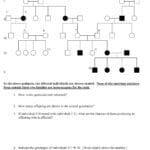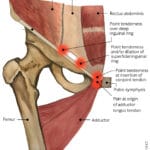Red blood cells, the tiny oxygen carriers in our bloodstream, typically resemble donuts. However, some red blood cells develop a peculiar “mouth-like” or slit-shaped central pallor, earning them the name “stomatocytes.” This intriguing morphological anomaly can sometimes signal underlying health issues, ranging from inherited conditions to acquired diseases. This comprehensive guide delves into the causes, symptoms, diagnosis, and treatment of stomatocytosis.
Decoding Stomatocytes: What Are They?
Stomatocytes are red blood cells (erythrocytes) distinguished by their unique morphology. Instead of the typical round shape with a circular central pallor, stomatocytes exhibit a slit-like or “mouth-shaped” central pale area, most noticeable in dried blood smears. In wet preparations, they exhibit a cup-shaped morphology. This “mouth-like” appearance, also described as “coffee bean-shaped” or “cup-shaped,” sets them apart and provides valuable diagnostic clues. [https://www.lolaapp.com/sheep-brain-dissection-labeled] provides a helpful analogy to understanding cell structure. This distinct shape, partially an artifact of the drying process for blood smear analysis, is a key indicator for hematologists.
Unraveling the Causes: Why Do Stomatocytes Form?
Stomatocyte formation can stem from both inherited genetic disorders and acquired conditions.
Hereditary Stomatocytosis (HSt)
HSt arises from genetic mutations affecting red blood cell membrane proteins, disrupting the delicate balance of water and salts within the cells. Think of it like a faulty faucet or drain within the cell, leading to either overhydration or dehydration. Several types of HSt exist:
- Overhydrated Hereditary Stomatocytosis (OHSt): Cells absorb excess water, becoming overinflated.
- Dehydrated Hereditary Stomatocytosis (DHSt) (Xerocytosis): Cells lose too much water, becoming dehydrated.
- Cryohydrocytosis (CHC): Red blood cells are overly sensitive to temperature fluctuations.
Acquired Stomatocytosis
Acquired stomatocytosis develops later in life due to various factors:
- Liver Disease: Particularly alcoholic cirrhosis, where impaired liver function disrupts lipid and cholesterol processing, affecting red blood cell membranes.
- Rh Null Disease: This rare blood type, lacking all Rh antigens, alters red blood cell membrane structure.
- Medications: Some medications, like chlorpromazine, can induce stomatocyte formation.
- Alcoholism: Excessive alcohol consumption can directly affect red blood cell membranes.
- Malignancies: Certain cancers, especially those infiltrating bone marrow (e.g., lung, breast cancer) might be associated with acquired stomatocytosis.
- Low Phosphate Levels (Hypophosphatemia): Phosphate deficiency can alter red blood cell shape.
- Cationic Drugs and Low pH (In Vitro): Exposure to specific positively charged medications or acidic environments in laboratory settings can cause stomatocyte formation.
Recognizing the Signs: Symptoms of Stomatocytosis
The clinical presentation of stomatocytosis varies widely, from asymptomatic to severe. Many individuals with mild stomatocytosis experience no noticeable symptoms. However, more pronounced cases, often associated with hemolytic anemia (premature red blood cell destruction), can present with:
- Anemia: Reduced red blood cell count, leading to fatigue, shortness of breath, and pallor.
- Jaundice: Yellowing of the skin and eyes due to bilirubin buildup from red blood cell breakdown.
- Splenomegaly: Enlarged spleen, working overtime to filter damaged red blood cells. This can sometimes cause left-sided abdominal discomfort or fullness.
- Gallstones: Increased bilirubin can contribute to gallstone formation.
Diagnosing Stomatocytosis: How is it Detected?
Diagnosing stomatocytosis begins with a simple blood test:
- Microscopic Examination of Blood Smear: The telltale “mouth-shaped” cells are readily identifiable under a microscope.
- Further Investigations: If stomatocytes are detected, further tests are necessary to pinpoint the cause:
- Osmotic Fragility Test: Assesses red blood cell susceptibility to rupture in different salt concentrations.
- Genetic Testing: Identifies specific gene mutations associated with hereditary stomatocytosis.
- Liver Function Tests (LFTs): Evaluates liver health and function.
- Phosphate Level Assessment: Measures phosphate levels in the blood.
[https://www.lolaapp.com/sheep-s-pluck] can provide a visual representation of organ systems involved in these processes.
Treating Stomatocytosis: What are the Options?
Treatment for stomatocytosis depends on the underlying cause:
Hereditary Stomatocytosis:
- Splenectomy: In severe cases with significant hemolysis and splenomegaly, surgical removal of the spleen may be necessary.
- Supportive Care: This may include blood transfusions for severe anemia and folic acid supplements to support red blood cell production.
Acquired Stomatocytosis:
- Addressing the Underlying Condition: Management focuses on treating the root cause, such as liver disease, hypophosphatemia, or malignancy. This might involve medication, lifestyle changes, or other therapies.
- Discontinuing Offending Medications: If a medication is suspected, discontinuation or switching to an alternative may be recommended.
Ongoing Research and Future Directions
Research on stomatocytes and related conditions is ongoing. Scientists are actively investigating the precise mechanisms of stomatocyte formation, exploring the complex interplay of genetic and environmental factors. Further research may also lead to new diagnostic tools and therapeutic strategies for hereditary stomatocytosis and other related disorders.
Important Considerations
- HSt Subtypes: Different HSt subtypes have distinct genetic mutations and require individualized management approaches.
- Coexisting Conditions: Stomatocytosis can occur alongside other red blood cell disorders.
- Evolving Knowledge: Our understanding of stomatocytes and their impact on health continues to evolve with ongoing research.
Disclaimer: This information is for educational purposes only and should not be considered medical advice. Always consult with a healthcare professional for any health concerns or before making any decisions related to your medical care.
- Unraveling Einstein’s Legacy: Who Inherited His Genius? - July 14, 2025
- Unlock Einstein’s Family Tree: Bernhard Caesar & Untold Stories - July 14, 2025
- Unveiling Bernhard Caesar Einstein: His Life & Albert Einstein’s Legacy - July 14, 2025

















1 thought on “Stomatocytosis: A Comprehensive Guide to Causes, Symptoms, Diagnosis, and Treatment”
Comments are closed.